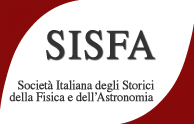Speaker
Description
Johannes Kepler compiled the Epitome Astronomiae Copernicanae (Summary of Copernican Astronomy) in the years of his maturity. He had already developed his three astronomical laws, and he had understood how the adoption of a new astronomy, founded upon the Copernican point of view, compelled the astronomers to also introduce a new physics. Kepler's celestial physics permeates this masterpiece, and the unprecedented alliance between physics and astronomy can be seen as its characteristic feature.
The Epitome is organized in an original way, as it is divided into questions and answers; the present analysis focuses on a precise question/answer, relating to the mechanism that makes some celestial objects (here referred to as secondary planets) revolve around other bodies (here called primary).
Even if we lack an Italian translation, this is a well known page, as here Kepler showed how his Third Law, the one relating the squares of the orbital period of the planets to the cubes of the semi-major axes of their orbits, applies also to the moons of Jupiter.
But, as it often happens with Kepler, the agreement of the Third Law to the data of Jupiter's satellites, the discovery of which was still recent and represented an important element in favor of the Copernican system, is extrapolated from the context.
I propose here an investigation of the whole paragraph. Once again, Kepler will be able to amaze us with a mixture of arguments that are still scientific in our eyes, with others still connected to his philosophical, archetypal, “not so modern” cosmology. I would point out how the universality of his Third Law was, according to Kepler, an important contribution towards the understanding of the mechanism by which celestial objects can interact with each other.

